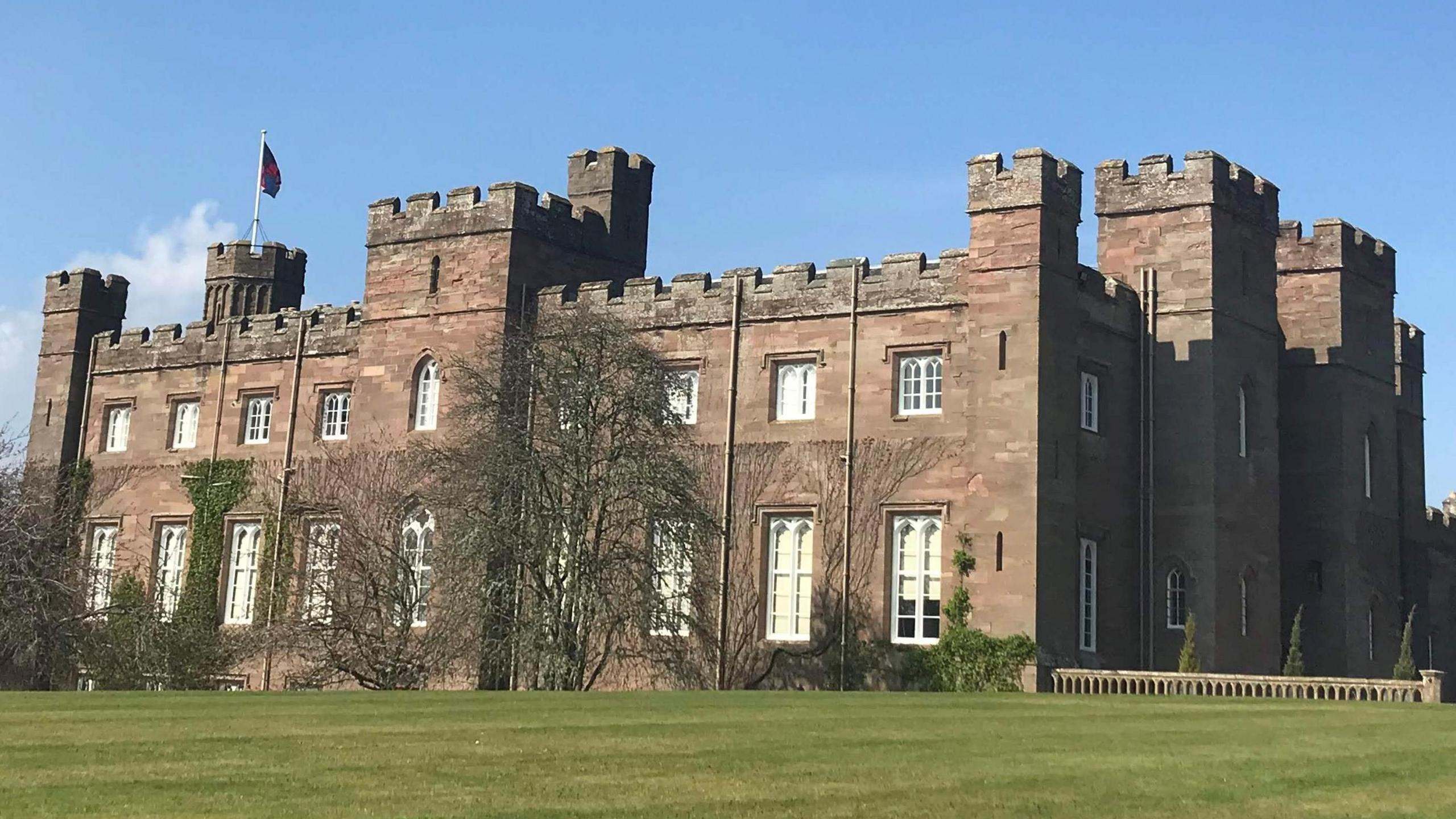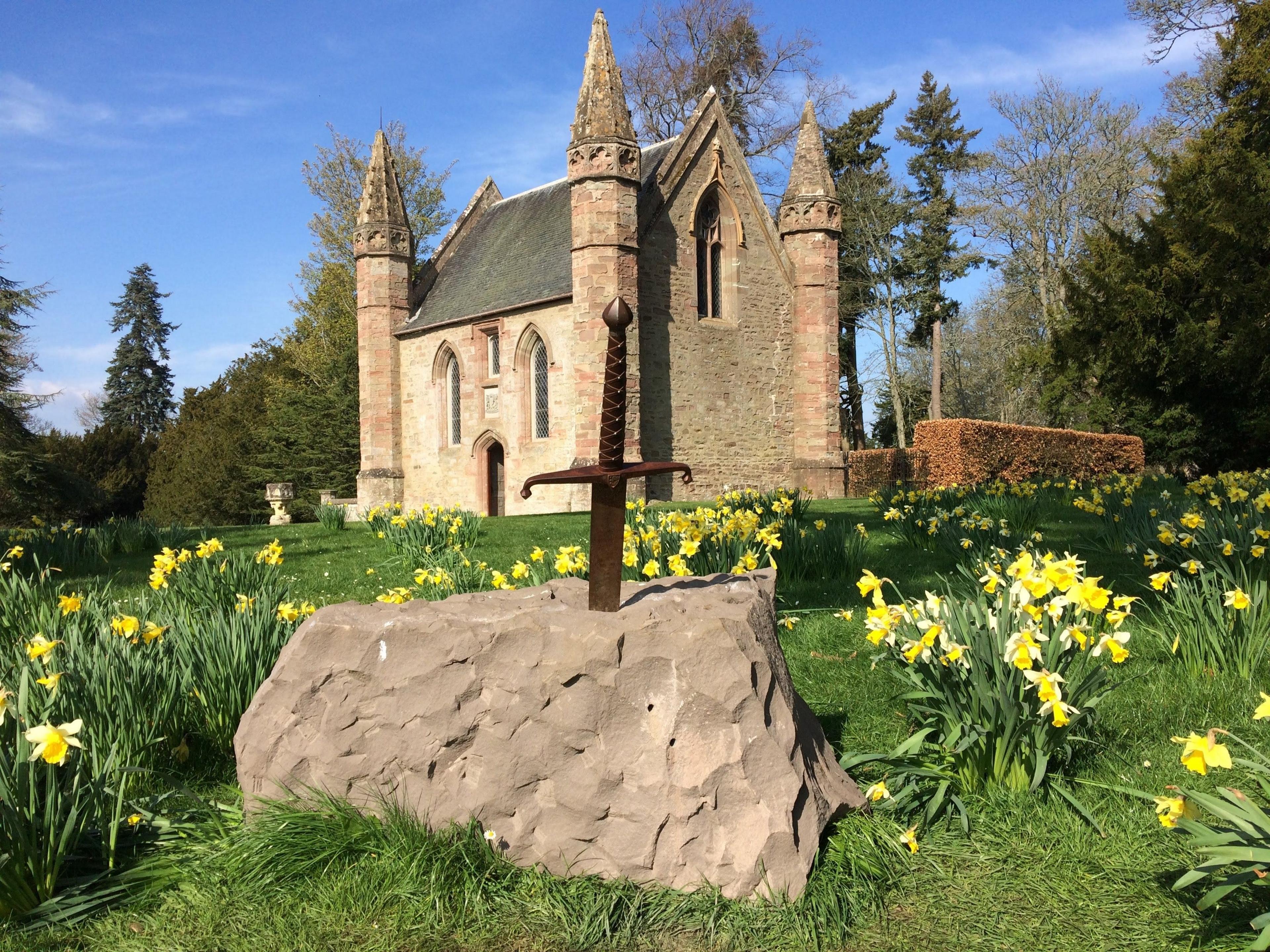Scone Palace plans for £10m visitor attraction approved

Scone Palace has played a big part in Scottish history for more than 1,000 years
- Published
A £10m plan to develop Scone Palace in Perthshire into a "world class visitor attraction" has been approved by councillors.
The plans have been 10 years in the making and were approved by Perth and Kinross councillors on Wednesday.
Viscount William Stormont, who is the heir to the palace, told councillors the developments would allow the palace to continue to punch high in "an increasingly competitive tourism market" where "visitor expectations have increased".
Despite the plans being approved there were a few changes from the original application, including the rejection of plans for copper cladding to be used as finishing on the stable building.

The plans would transform the palace's disused stable building into a visitor centre with a shop, restaurant and ticket office
Stormont Trading LP submitted the plans to transform the palace's disused stable building into a visitor centre with a shop, restaurant and ticket office.
The plans also include an adventure play park, a solar meadow with about 2,000 panels, a new car park and new cycling and pedestrian links from Stormontfield Road.
The history of Scone Palace

Scottish monarchs were crowned on Moot Hill inside the palace grounds where a replica of the Stone of Destiny now stands
Scone has played a big part in Scottish history for more than 1,000 years.
It was the site of medieval parliaments and coronations of monarchs such as Macbeth and Robert the Bruce.
The kings were crowned on Moot Hill inside the palace grounds where a replica of the Stone of Destiny now stands.
The original is on display in Perth Museum, after spending hundreds of years at Westminster where it was taken by the English king Edward I.
Originally an Augustinian abbey, Scone was destroyed in 1559 and rebuilt as a palace in the 1580s.
The palace was significantly enlarged and remodelled in the early 19th Century and has been the home of the Earls of Mansfield for 400 years.
Next year is the 60th anniversary of the palace being opened to the public. A decision that was made by Viscount Stormont's great-grandparents.
Disruption to the plans
The original plans for the visitor centre included copper cladding on the stable building.
However this was removed despite Viscount Stormont defending the "unapologetically modern" extension.
He said that the "bright metallic appearance of the copper cladding provides a clear visual identity tied to the crowning place of Scottish kings".
Historic Environment Scotland showed concern, along with Perth and Kinross Council's Conservation team, saying the use of copper was "not appropriate".
The committee voting on the project were split on whether to allow the copper cladding.
Convener Ian Massie held the casting vote and rejected the cladding.
Howver, he said: "The development at Scone Palace represents a rare opportunity to enhance one of Scotland's most historically significant landmarks, while securing its future as a sustainable, inclusive and economically vibrant destination."
He added: "This proposal is not only ambitious in scope but deeply respectful of our heritage."
The future of the palace
Viscount Stormont said he hopes the renovation of the palace will allow the village of Scone to thrive for a further 60 years.
He said: "We want to continue to punch high but are now battling in an increasingly competitive tourism market in Scotland."
He said that the palace and Perth Museum "need to compete with the likes of the V&A in Dundee and Stirling Castle to draw people to visit and stay in Perth".
The palace's "unique heritage" meets the high expectations of the public, however the facilities do not, Viscount Stormont said.
He said: "This is why the stables project is so important to Perth, Scone and the region."